|
|
||||
|
Sweden has thrown away the sacred renewables talisman and opened the escape valve from the Temple of WindySolar-Inc. They’ve done the obvious thing anyone who was worried about CO2 would have done in 1992 — aimed for nuclear. They have switched their 100% “renewables” target by 2045 to a 100% fossil-free target. It’s still a pagan antipathy of the sixth element of the periodic table. But at least it’s a more pragmatic version. Sweden topped the EU list for renewables share of energy in the last tally — albeit with mostly biomass and hydropower. It was a star of the renewables set — number 1 on the Climate Council list of the “11 countries leading the way“. Yet here they are effectively giving up on the unreliable generators. Surely this must hurt? The team at NetZeroWatch applaud the Swedish shift, and suggest the UK follow. Sweden adopts new fossil-free target, making way for nuclearFlorence Jones, Power Technology
The change means that nuclear generation can count towards the government’s energy targets. Sweden’s Government voted to phase-out nuclear power 40 years ago, but in June 2010 parliament voted to repeal the policy. The government elected last year seeks to promote nuclear power. Finance Minister Elisabeth Svantesson said in parliament. “We need more electricity production, we need clean electricity and we need a stable energy system.” State-owned utility Vattenfall is looking at building at least two small modular reactors and at extending the life of the country’s existing reactors. It’s not such a big shift for Sweden. Thirty years ago their electricity was half hydro and half nuclear, and this is just a return to that after the intrusion of some wind and bioenergy. This new target is just for fossil free electricity, not total “fossil free” energy use. Sweden still gets about 30% of all its energy from coal, oil and gas, and that is not about to change. The new moderate right Swedish government was elected last September and one of the first things it did was cut EV subsidies “with immediate effect”. As Euractiv notes, the Swedish government has also cut requirements for carbon neutral fuels in cars and also stood up for countries wanting to keep their coal plants on standby. The coalition plans to cut the bio-fuel mix in petrol and diesel, leading to bigger CO2 emissions, a move that could mean Sweden missing 2030 emissions goals. Proposals by Sweden to allow countries to prolong subsidies for standby coal power plants have also been met concern in the EU, while Stockholm also wanted Brussels to water-down a landmark law to restore deteriorating natural habitats. To all intents and purposes, this is what a government would do if it didn’t believe the climate dogma but didn’t want to rock the global boat. Swedish Flag image: wikipedia
By Jo Nova Despite the dreaded “polar amplification” and 1,000 new coal fired plants in China, apparently the fragile Antarctic ice shelves have barely changed in the last 40 years. Indeed, instead of fragmenting, they are melting slightly slower now than they were in 1980. Naturally, the researchers *know*, as only high priests can, that things will change any day now. The tipping point is just around the corner, hiding, ready to pounce. Mankind has emitted fully 65% of our total carbon emissions since the year 1980 — and yet it has not done much at all to the melt-rate of the ice shelves of Antarctica. In fact, if anything, climate change is slowing the ice melting. That’s 1.1 Trillion tonnes of man-made CO2, and no catastrophe to show for it. The new study by Banwell et al used satellite microwave data and modeling of meltwater. Note that the “small but significant decrease” in melting gets headlined as “a minor change”. Since when where significant warming trends reported as just a “minor change” of indeterminate direction? Antarctic ice shelves experienced only minor changes in surface melt since 1980, study findsThe results show Antarctic ice shelves overall have seen only minor changes in surface melt rates over the past 40 years, and the modeling results even show a small but significant decrease in melt rates during the study period. The findings appear to be good news for the Antarctic region, but the researchers caution that they do expect Antarctic ice shelves to see higher surface melt in the coming decades. Not to put too fine a point on it, but the “small but significant” decrease in melt rates is visible to the naked eye.
 Timeseries of observed and modeled melt days. All ice shelf regions in Antarctica. –Banwell Since 1998 the Antarctic ice shelves have had cooler mean summer temperatures and lower meltwater volume. Which climate models predicted this? 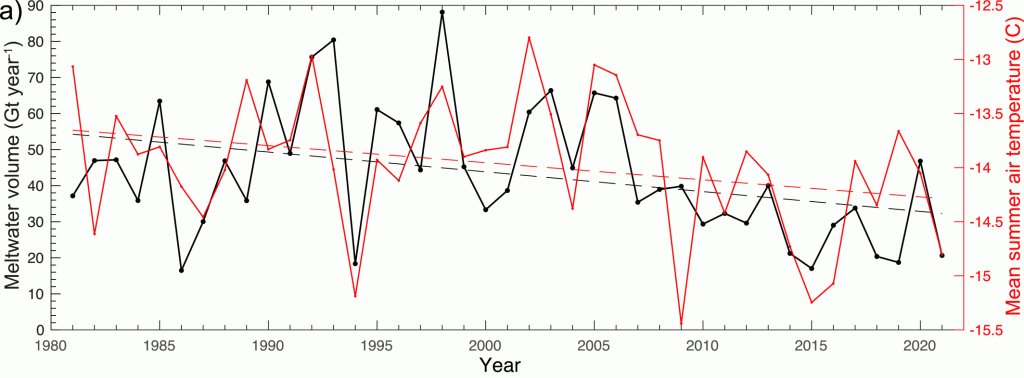 Figure 4. Modeled meltwater production volume. (a) Modeled annual meltwater volume (Gt yr−1) over all ice shelves (black line, left y-axis) and Modern-Era Retrospective analysis for Research and Applications Version 2 mean summer (November 1 to March 31) air temperature over all ice shelves (red solid line, right y-axis). Banwell
Feel the faith of the research team — “it just hasn’t kicked off yet”. “As air temperatures increase over the coming decades, we’re expecting a real increase in these surface melt rates up until the end of the century,” Banwell said. “So although we haven’t seen much change in melt rates yet, we will see that to come. It just hasn’t really kicked off yet.” If Antarctic ice shelves were melting faster we would have seen headlines every year. Indeed we got them anyway — from August 2022 — “Antarctica’s Ice Shelves Could be Melting Faster than We Thought.” That was Caltech, which modeled the effects of a small current running counterclockwise around Antarctica and predicted the ice sheets were melting more than the great climate models thought they would. When will “The Team” admit they were wrong? Keep reading → By Jo Nova James O’Keefe formerly the soul of Project Veritas is back — he’s set up O’Keefe Media Group (OMG News). One of his insiders filmed Serge Valay, A recruiter at BlackRock, bragging about how they work. “It’s not who the President is, it’s who controlling the wallet of the President.” “Who’s that?” she asks. “The Hedge Funds, BlackRock, the banks. These guys run the world.” ..you take a big f– ton of money and then you can start to buy people. Obviously we have this system in place. First, there’s the senators. These guys are f***ing cheap. You got ten grand? You can buy a senator. BlackRock don’t want people to notice them: “BlackRock don’t want to be in the news. They don’t want people to talk about them. They don’t want to be anywhere on the radar.” “Why not?” she asks. “I don’t know … I suspect because it’s easier to do things when people aren’t thinking about it.” What kind of things are easier to do in the dark? Things other people won’t like. News – he says, is propaganda. If you hear it on the news, do the opposite. If Jim Kramer says buy, you should sell. He’s an inverse indicator… Volatility creates opportunity to do business. War is really f** good for business. As I’ve written before, there’s a reason everything seems to be going off the rails simultaneously: It’s fed by a dark bubble.Vast amounts of “money printing” via low interest rates and easy loans mean the rich get richer, and pools of wealth equivalent to whole nations falls under the control of just one or two men. When men with trillions of dollars in their pockets can “do favours” for politicians, who in turn do favours for them, no wonder the politicians don’t care much what the voters think. Don’t wait for the receipts. Ask the question: If a few men had this kind of power, hypothetically, what would stop them using it? Democracy was sold to the highest bidder. h/t ColA Photo of logo by eflon on Flickr. Adapted. CC by 2.0.
After thirty years of propaganda the people aren’t buying the crisis. The UK Sun polled 2,000 people and found that 60% think the government should be *prioritizing* a reduction in their bills rather than worrying about reaching Net Zero. Barely 20% thought Net Zero was more important — and they were presumably the only ones who could still afford to pay their bills. The bigger problem is that it’s not democracy. The UniParty just don’t seem interested in winning votes. They’re not fighting “over the centre”, they’re fighting over the most extreme left 20%. And ponder that these dismal results come despite 65 per cent of people thinking Net Zero is somehow a useful idea. Imagine what the polls would be like when people find out that carbon dioxide feeds the world and the Sun controls the climate? Hat tip to NetZeroWatch Sun poll shows clueless MPs have NO idea of the pain policies like Net Zero inflict on ordinary Brit families by Harry Cole, A massive 62 per cent told a YouGov poll for The Sun that getting prices down is more important than achieving carbon neutral status by midway through this century. Households face paying out at least £10,000 for new central heating systems such as heat pumps and an average £50,000 for a green car. Pretend the conservatives were conservative. Pretend they cared about the voters. When asked if Ministers should prioritize keeping prices down over reaching Net Zero, fully 76% of conservative voters agreed, and half of Labor voters did too. If, hypothetically, one major party said they’d build cheap reliable electricity, while the other spouted off about pagan weather control, 60% of the electorate are there for the picking… Nearly half the country is fed up and every protest they see on the news just makes them angrier: 50% of voters don’t want to ban petrol driven cars too. Half the country is being ignored (and the other half get their “news” from the BBC?) Does half the country matter? Read it all at The Sun. Poll Results at YouGov *Edited to reflect that the questions were about government priorities.
By Jo Nova  Betelgeuse is the red giant at the top of Orion. Image by yoshitaka2 from Pixabay Astronomers are very excited. A new paper suggests Betelgeuse — the red giant in Orion — might be only a decade or two (or maybe a century) away from going supernova. It’s the sort of thing that only happens once in a thousand years. Whenever it does go boom, it will shine brighter than the moon, and dominate the sky for a few months to a year. It’s 600 light years away, so if it is going to go supernova in the next twenty years, then, of course, it must have already happened and the light is on the way. Before anyone cracks the champers, the new paper by Saio is based on models trying to figure out what’s happening on a pulsating ball of fire 5,600 trillion kilometers away. Will We See a Supernova in Our Lifetimes?There hasn’t been a supernova in our neighborhood since July 4, 1054, when Chinese astronomers observed a supernova, now labeled SN1054, that remained visible for almost two years. The remnants of that supernova are now called the Crab Nebula. At the end of it’s life after a star runs out of hydrogen to fuse, it starts to collapse. The extra pressure and heat that generates kicks off fusion with the helium core which produces carbon. When the helium runs out the star shrinks again and pressurizes the carbon core, fusing carbon into bigger elements. But these stages are shorter and faster. Below is a graph of the timelines (with a log scale), and in Saio’s latest estimate Betelgeuse is already burning through the carbon core and has less than 20% of the carbon left, and maybe as low as 0.5%. The red line (the carbon) is theoretically bottoming out in less than 10 to 100 years. The game is over when it fuses its way up to iron:Charlie Martin: If the star masses more than the Chandrasekhar limit, gravity causes the stellar material to continue fusing, producing elements farther and farther up to iron and nickel. Eventually, though, the core of the star is largely iron, and the fusion of iron takes more energy than it releases. At that point, the equilibrium of fusion heat and gravitational pressure is broken. The star collapses inward at 20% or more of the speed of light; the shockwave compresses the core until the atoms collapse; and the electrons meet the protons, converting them to neutrons and neutrinos and releasing immense amounts of energy — 100 “foe“, or about 1046 Joules. We may not see the supernova, but from 6:40 minutes we can at least see Dr. Becky Smethurst get genuinely excited. She explains it well. Though what are the odds, a star 10 million years old reaching the end of days in the 21st century. OK, I’m skeptical… Sometimes it’s nice to get away from politics.
Just how far is Betelgeuse? To put in perspective how little we know, I typed in “how far is Betelgeuse” and discovered to my surprise, we don’t have much idea. Three years ago Betelgeuse was “discovered” to be much closer than we thought at 543 light years away. But in January this year it was found to be 724 light years from Earth, or at least between 613 and 881 light years away. Righto… Betelgeuse is a biggie. See the progression of astronomical bodies up to Betelgeuse in set 5. If it were where our sun is, it would reach past the asteroid belt. Lucky it isn’t our sun. 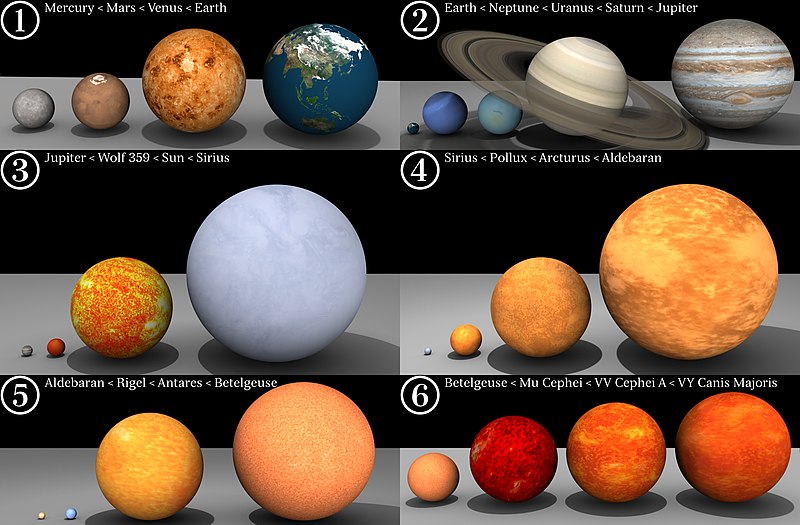 Dave Jarvis (https://dave.autonoma.ca/) REFERENCES “The evolutionary stage of Betelgeuse inferred from its pulsation periods” by Saio et al.
China is the leader in EV car production but it’s not quite the success you might think it is. The CCP was apparently determined to claim that they are making more EV’s than Tesla. But in order to get the EV subsidies, companies are producing vast numbers of cars no one wants to buy. It seems these cars are registered, falsely listed as “sold” and driven 30 miles to a graveyard to presumably rot, or spontaneously combust, whichever comes first. After thirteen years of one particular subsidy, supposedly only worth 3-6% of the best selling car, the government has paid out nearly $15 billion, which seems like it would buy quite a few fields of Neta V EVs. “China is the land of shortcuts and facades” Winston Sterzel has an insiders view on China, and claims there are also fly-by-night investment schemes which appear, inflate and disappear, in get-rich-quick projects purely designed to scam investors out of their money. In 2018 bicycle sharing schemes led to mountains of rotting bikes, and so it is again — this time with glass, heavy metals and rare earths. Who knows what the real price of an EV is in China? The long running subsidy ended in January, causing a decline in sales, which was supposedly only 1.4% down, but was somehow so bad (whatever the real number was) that several cities leapt to offer their own subsidies of about US$1,452 per car, and now the government has decided to extend the “EV Tax incentives”. Not surprisingly, given the waste, inefficiency, and purposeless grind, something bad is happening in the Chinese economy — all car sales (petrol and EV’s) are down nearly 20%. Which is not to say Western economies don’t have their waste, inefficiency, and purposeless grind. Elon may be getting the last laugh if this May 31 headline is correct: Tesla’s $37,000 Model Y is outselling EVs that are seven times cheaper in ChinaHat tip to Simon Thompson …. torn line Image by starline on Freepik
Once again, batteries just aren’t living up to hopes and dreams. Only a year ago Rolls Royce were excited about the nine-seater P-Volt electric plane — forecasting that it would be carrying customers on ninety mile hops in 2025 and 250 miles by 2030. Alas, it must have been a sobering year. The developers of the P-Volt have pulled the pin indefinitely and decided to wait until battery capacity and weight improvements make it realistic. Pioneering electric plane shelved as batteries only last a few hundred flightsHoward Mustoe, The Telegraph A pioneering electric plane developer has shelved development of its new craft after discovering that its batteries will only last a few hundred flights before they need to be replaced. Tecnam said its main challenge was the energy density of the batteries available today, which are relatively too heavy for the amount of power they can store. The speed at which the batteries would lose charge would erode the nine-passenger craft’s value, ruining its commercial prospects, it added. “Not commercially viable” could be name for most Green engineering. What do we call it when it’s so bad it’s not even subsidy-viable? — A blessing. They’re talking about batteries “degrading in weeks”:Tecnam was more forthright in their press release. “A few hundred flights” was the optimistic best case scenario. Fast charging and rapid turnarounds would make that worse: The proliferation of aircraft with “new” batteries would lead to unrealistic mission profiles that would quickly degrade after a few weeks of operation, making the all-electric passenger aircraft a mere “Green Transition flagship” rather than a real player in the decarbonisation of aviation. Taking into account the most optimistic projections of slow charge cycles and the possible limitation of the maximum charge level per cycle, the real storage capacity would fall below 170Wh/kg, and only a few hundred flights would drive operators to replace the entire storage unit, with a dramatic increase in direct operating costs due to the reserves for battery replacement prices. The power to waiting ratio was doomedWaiting times are too long, the power is too low, and the battery life is terrible. The truth is everyone in aviation wants fast-charging planes so the air crew and the capital assets aren’t sitting around for hours paying airport-world prices while they earn nothing. But batteries have a shorter lifespan if they are pumped hard, fast and charged completely full. Sadly slow charging and underchanging are not a solution either. Even if we treat these babies gently with long slow feeds, they would only store less than “170 watt-hours per kilogram”. As the Telegraph authors point out, jet fuel has an energy density of 12,000 watt-hours per kilogram, which is seventy times as much. The bottom line, Tecnam explains, is that the only alternative to waiting for the development of much lighter, better batteries, is “extremely aggressive speculation on uncertain technology”. It would be a wild and risky bet. Not that we aren’t doing that with our energy grids.
Corporate leaders are not bragging about their environmental wins or diversity hires with the same fervour they had a year ago. Some of this is due to pressure from the 23 US state Governors who are asking CEO’s sharp and pointy questions about anti-trust behaviour and fiduciary duty and campaigning on anti-Woke platforms. And some of this is due to the backlash against disastrous Bud-Light and Target campaigns. Companies Quiet Diversity and Sustainability Talk Amid Culture War BoycottsMark Maurer, Wall Street Journal Companies’ mentions of green and social initiatives during earnings calls have fallen off sharply in recent quarters, reversing a more boastful approach taken over the past few years amid intensifying pressure from some investors and conservative activists. Finance chiefs and other executives have significantly quieted down in public settings about their environmental and employee diversity efforts … Charting the rise and fall of public “Woke” declarations in the corporate world.  Peak ESG may be behind us… WSJ The backlash is coming from several angles — investors, conservative groups, political leaders. It’s a good sign democracy and free markets are not dead yet. But these companies are probably pursuing quiet “Woke” agendas. After all, as long as the Big Money end of town is demanding progress reports during the ski weekends in Davos, many companies will continue to buy the wind and solar talismans to ward off the fury of the BlackRock and Net Zero Banker cabal. It’s a win, the trainwreck is slower, but still in progressIn Australia, politicians stopped bragging about emissions trading schemes when Tony Abbott won in a landslide in 2013 with Axe the Carbon Tax. But two years later the party dumped Abbott and snuck in an emissions trading scheme anyway — they called it “The SafeGuard Mechanism” and hid their plans in the details. In that case, popping the public bragging bubble slowed the trainwreck by a decade. We haven’t won until CEO’s can openly mock people who think eating crickets will change world temperatures. Thanks to ClimateDepot Ten years of lies, deception, and dangerous experimentsImagine if our adversaries were splicing together mutant viruses and testing them on humanized mice for years in order to make them more pathogenic, and our top researchers were helping them, our government was funding them, and we had years of warnings that the experiments were dangerous. The Sunday Times says “bioweapon” very quietly, but it’s in print in a long feature article with plenty of ugly details. The headline is very sedate given the gravity. The world would have reacted very differently in January 2020… An Act of War or an accident of war?What really went on inside the Wuhan lab weeks before Covid eruptedJohnathon Calvert and George Abuthnott, The Sunday Times Fresh evidence drawn from confidential files reveals Chinese scientists spliced together deadly pathogens shortly before the pandemic, the Sunday Times Insight team report. For starters — here’s a map of the places where people were reporting on social media that they had covid in January 2020. While everyone was talking about sea-food markets, the big clue was there all the time. These hot spots were published by the academics at Wuhan University. But they somehow didn’t think to label the Wuhan Institute of Virology. The US Senate investigation years later put that dot on the map (after half a billion people had caught the virus). If any of our government health and intelligence agencies had been remotely competent or interested in our health, and if the CCP had been a good global citizen, this would have been known in the first few months. From a cave in YunnanThe story starts in 2012 with the WIV team finding SARS like viruses in the Shitou cave 800 kilometers south of Wuhan. They had American funding and training to help them. The same year, six miners nearby in Moijang Mine fell horribly sick with some unknown coronavirus and three died. The WIV team kept this to themselves, but went back to the Moijang mine to collect 1,300 samples from the bats there over the next few years. They discovered not one or two, but 293 coronaviruses. One of those viruses would emerge as the nearest known relative of Covid-19. (Called RaTG13) Over the next eight years the WIV would experiment on the SARS-like coronaviruses from the Shitou cave and publish some papers, but in parallel, they were apparently also working on the nasty Moijang mine viruses, which they weren’t talking about. Thanks to American know-howThe Americans meanwhile have taught the chinese researchers how to work with mice that have “humanized” lung cells. The WIV team infects the mice with a mutated version of the SARS-like virus they found in the cave in 2012. Three quarters of the test mice die, but again, the WIV team keeps it to themselves. The American who led the way and taught the Chinese was Ralph Baric at the University of North Carolina. He was the one who made the humanized mice — he put human genes into the mice so they grew “human-like” lungs which made them ideal for studying human pathogens. He knew he was playing with fire: “Ominously, tools exist for simultaneously modifying the genomes for increased virulence [and] transmissibility,” he had written in a 2006 paper. “These bioweapons could be targeted to humans, domesticated animals or crops, causing a devastating impact on human civilisation.” By 2012 as many as 30 labs around the world were working with live SARS viruses and a senior fellow at the Centre for Arms Control and Non-Proliferation called for these experiments to be stopped, pointing out that it was just a matter of time before a virus escaped. Yet grant money continued to flow to China. Between 2013 and 2015 the Bat lady of Wuhan, Dr Shi Zhengli collaborated with Ralph Baric in the US. She sent him the genetic sequences from the Shitou Cave SARS like viruses. In 2014 Barak Obama called for a moratorium on gain-of-function experiments, except for the “urgent and safe ones”, of course, and so Ralph Baric got an exemption. He melded the spike from one SARS virus onto another: The results of Baric’s experiment with the genetic sequence given to him by Shi were published in co-authored research in November 2015. The combined Sars copy and SHC014 virus was a potential mass killer. It caused severe lung damage in humanised mice and was resistant to vaccines developed for Sars. The paper acknowledged this might have been an experiment that was too dangerous. It caused a big stir. “If the virus escaped, nobody could predict the trajectory,” warned Simon Wain-Hobson, a virologist at the Pasteur Institute in Paris. The Wuhan team were apparently very happy to learn these techniques and kept right on going. Meanwhile a British bat expert called Peter Daszak was involved in a Wildlife Trust which somehow became the EcoHealth Alliance. He arranged some NIH grants, and provided cover by writing reports that missed a few important details. When 75% of the mice died in one experiment he wrote that they had mild SARS-like symptoms. He later said that this was based on “preliminary results”, but the mice were long dead by a few months before he said that. At one point in 2018 Daszak applied for $14 million in funding from Darpa (US Defense Advanced Research Projects Agency). He and Shi and Baric wanted to find lots of SARS like viruses and fuse them with their favourite deadly Shitou cave varieties. So Darpa said “no thanks” to that. But in the application they said they’d like to insert a furin cleavage site into a SARS virus. When the funding bombed, they claim they didn’t do the experiment, but somehow, by strange coincidence, when SARS-2 appeared it had a furin cleavage site. It was the first SARS-like coronavirus which had a the target site for our furin enzymes to cleave. [Dr Steven] Quay believes Covid-19 was created by inserting a furin cleavage site into one of the mine viruses and then serial passaging it through humanised mice. He submitted a statement to the US Senate explaining the process. “You infect the mice, wait a week or so, and then recover the virus from the sickest mice. Then you repeat. In a matter of weeks this directed evolution will produce a virus that can kill every humanised mouse.” The Chinese Military thought they would like to help too?Around 2016 or so the WIV team became fairly secretive. The Chinese Military allegedly got interested and funded WIV work as well. What a cauldron. The State Department investigators wrote in their report: “Despite presenting itself as a civilian institution, the United States has determined that the Wuhan Institute of Virology has collaborated on publications and secret projects with China’s military. The Wuhan Institute of Virology has engaged in classified research, including laboratory animal experiments, on behalf of the Chinese military since at least 2017.” One of the investigator sources said the secret military-funded experiments on the mine virus, RaTG13, began in 2016. At around that time, the Wuhan institute became even less open about its work and mostly stopped revealing any new coronaviruses it discovered. In the lead-up to the pandemic, the Wuhan institute frequently experimented on coronaviruses alongside the Academy of Military Medical Sciences, a research arm of the People’s Liberation Army (PLA). As I’ve said — we’re in a biotech Cold War, or maybe even a hot one:A vaccine to shift power The investigators believe the Chinese military had taken an interest in developing a vaccine for the viruses so they could be used as potential bioweapons. If a country could inoculate its population against its own secret virus, it might have a weapon to shift the balance of world power. There were plenty of red flags — in 2010 China was talking about the threat of biological weapons — warning with toe-curling detail on potential race-based genetic weapons. In 2015 Chinese Military Scientists said the Third World War would be fought with biological weapons. And the CCP has a history of helping to spread diseases by hiding the outbreaks: firstly in 1957, then 1968, then with SARS-1, now with SARS-2. Even as early as mid-April 2020 insiders had told us that the CCP ordered all virus samples at the WIV to be destroyed on January 1st 2020. Our intelligence agencies must have known. Art: https://www.scientificanimations.com h/t Ianl |
||||
|
Copyright © 2025 JoNova - All Rights Reserved |
||||






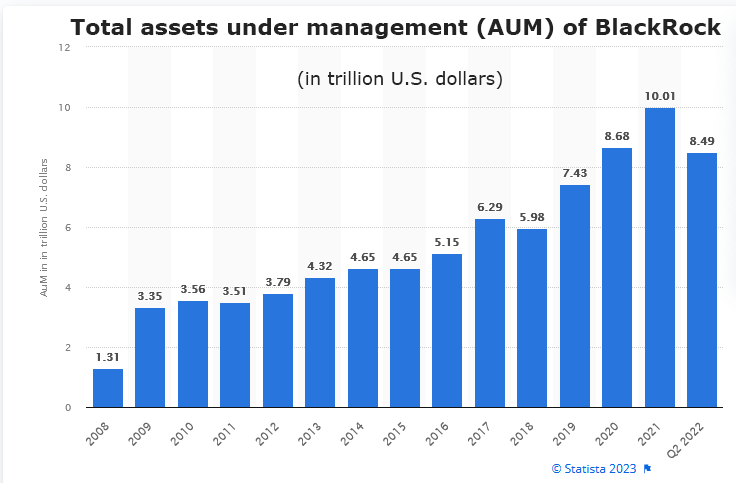

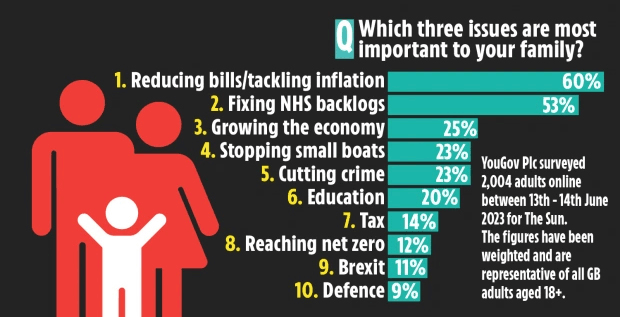
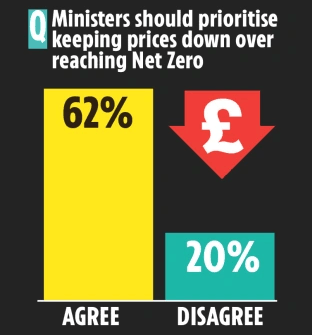

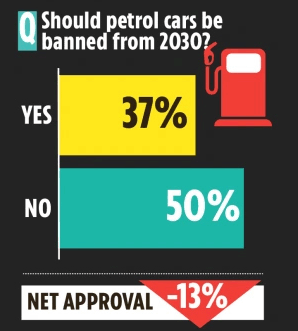
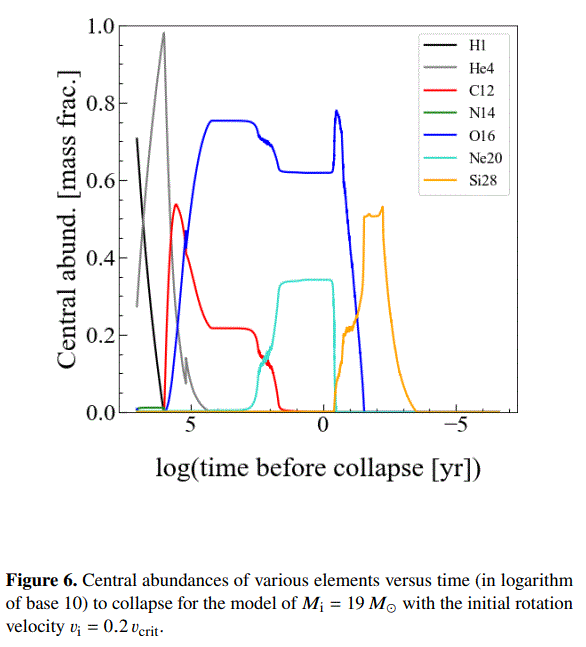
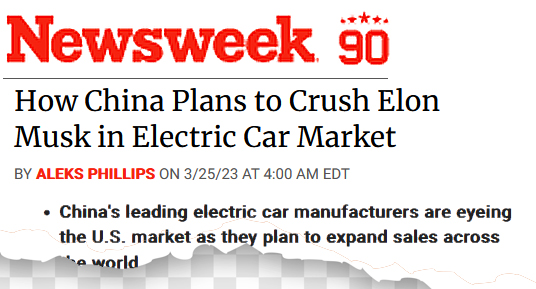







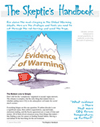
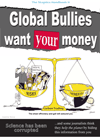





Recent Comments